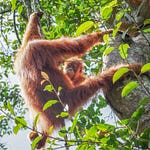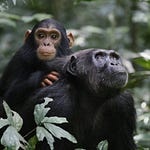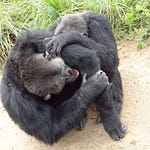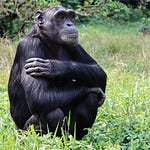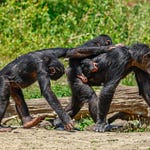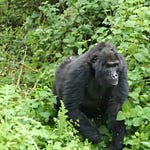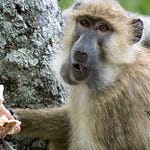A Word for an Old Behavior
Long before humans were brewing beer or pressing grapes into wine, our primate ancestors were already developing a taste for alcohol. Not through bottles or barrels, but by rummaging the forest floor for ripe, fermented fruit. This simple act—ignored by scientists for decades—may have laid the foundation for one of humanity’s most enduring cultural rituals: the feast.
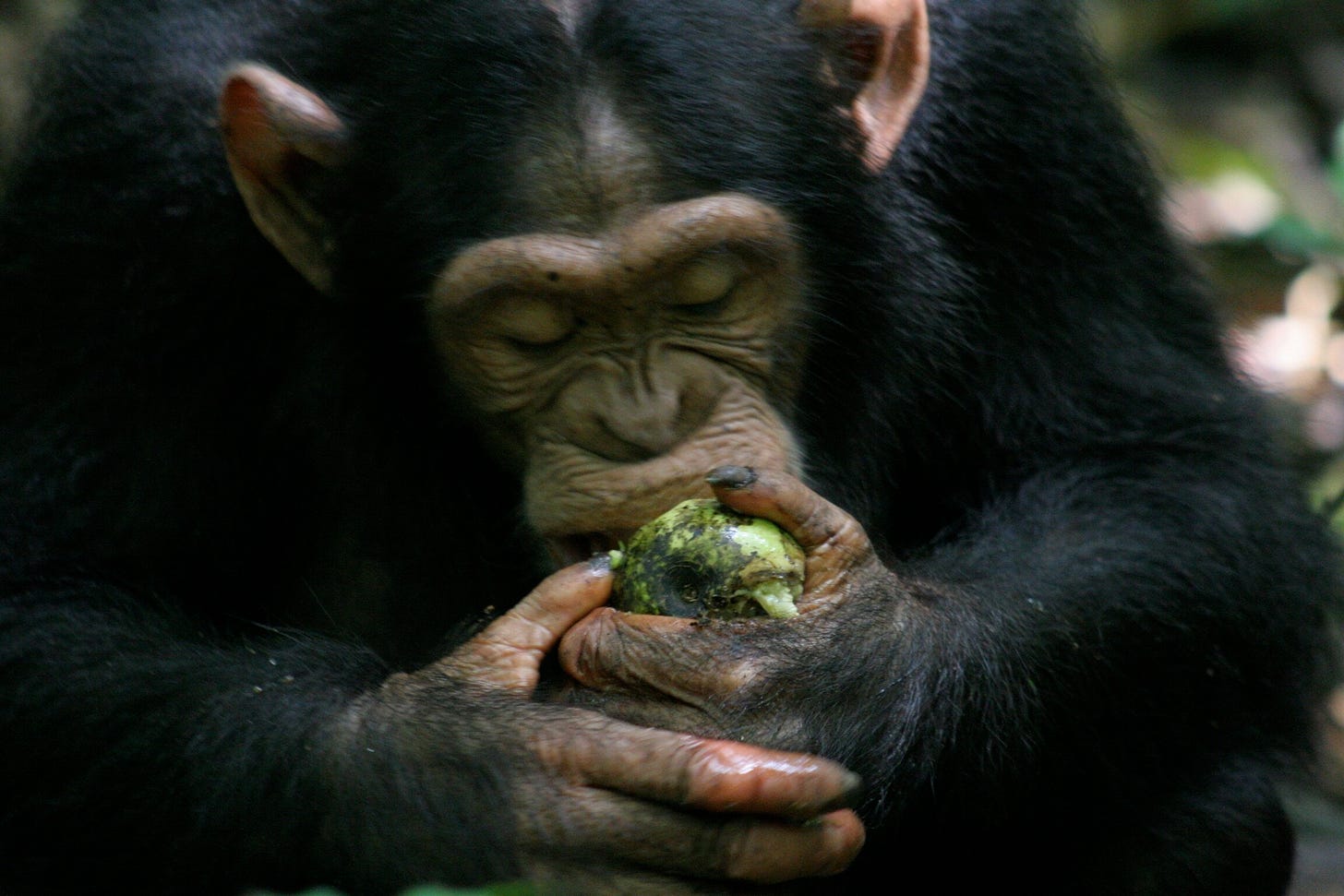
In a recent article in BioScience1, anthropologists Nathaniel Dominy, Luke Fannin, and colleagues propose a term for this behavior: scrumping. It describes the act of foraging for windfallen, overripe fruits—fruits that, thanks to natural fermentation, often carry a detectable trace of alcohol. And unlike the tree-picked fare often associated with fruit-eating primates, these fermented snacks are found on the ground, where they linger longer and ferment further.
“Scrumping is the act of gathering—or sometimes stealing—windfallen apples and other fruit,” the authors write. The term has linguistic roots in the medieval German word schrimpen, meaning “shriveled” or “shrunken.” It's a fitting label for fruit softened and soured by time, microbes, and gravity.
But this isn’t just a quirky lexicon addition. The act of scrumping, the researchers argue, is deeply embedded in the evolutionary history of humans and African apes, and it may even explain how humans developed an exceptional ability to digest alcohol.
A Genetic Clue Hidden in Enzymes
The science of this story begins with enzymes—specifically ADH4, the alcohol dehydrogenase class IV enzyme. In a 2015 study, researchers found that a single amino acid change in this enzyme occurred in the last common ancestor of chimpanzees, gorillas, and humans. That tiny mutation increased the ability to metabolize ethanol fortyfold.
“The significance of this mutation is rather profound,” Dominy writes. “If the early domestication of cereals revolved around making beer instead of bread, then the A294V mutation was the preadaptation that fueled the Neolithic Revolution.”
In short: before humans learned to brew, their ancestors had already evolved the liver machinery to handle alcohol. That adaptation may have originated not in early taverns or wine presses, but in the shady understory of tropical forests, where apes began to selectively eat fermented fruit.
Watching the Apes
To track how common scrumping is among modern great apes, the researchers analyzed field data on feeding behaviors from orangutans, chimpanzees, western gorillas, and mountain gorillas. They cross-referenced feeding events with the known growth height of the fruit consumed. If the fruit typically grows in the canopy but was eaten on the ground, it was flagged as scrumping.

What they found was striking. African apes—including chimpanzees and both gorilla species—engaged in scrumping regularly. Orangutans, on the other hand, did not. This contrast aligns with earlier biochemical data: orangutans lack the same enzymatic efficiency in processing ethanol that African apes possess.
Ethanol and Evolutionary Advantage
What might make scrumping so valuable in evolutionary terms? For one, it offers apes access to calorie-rich, ripened fruit without the danger of climbing. Tree falls are a real hazard—something Dominy has studied in prior work—and gathering from the forest floor reduces that risk. It also avoids competition with arboreal monkeys, who prefer unripe fruit in the treetops.
There’s also the alcohol itself. Fermentation adds a modest energy bonus. According to estimates, wild chimpanzees ingest small but nontrivial amounts of ethanol from fermented fruit—perhaps not enough to cause intoxication, but possibly enough to select for efficient processing.
“Scrumping frugivores are probably ingesting highly variable concentrations of ethanol,” the authors note, “ranging from negligible to moderate levels, depending on the plant species and stage of ripeness when a given fruit reaches the ground.”
Over evolutionary time, the ability to safely digest those fruits—rather than suffer toxic effects—could offer real survival benefits.
Social Sharing and the Birth of Feasting
But the story doesn’t end with enzymes or calories. The most provocative suggestion in the paper is that scrumping might be the precursor to social drinking and ritual feasting.
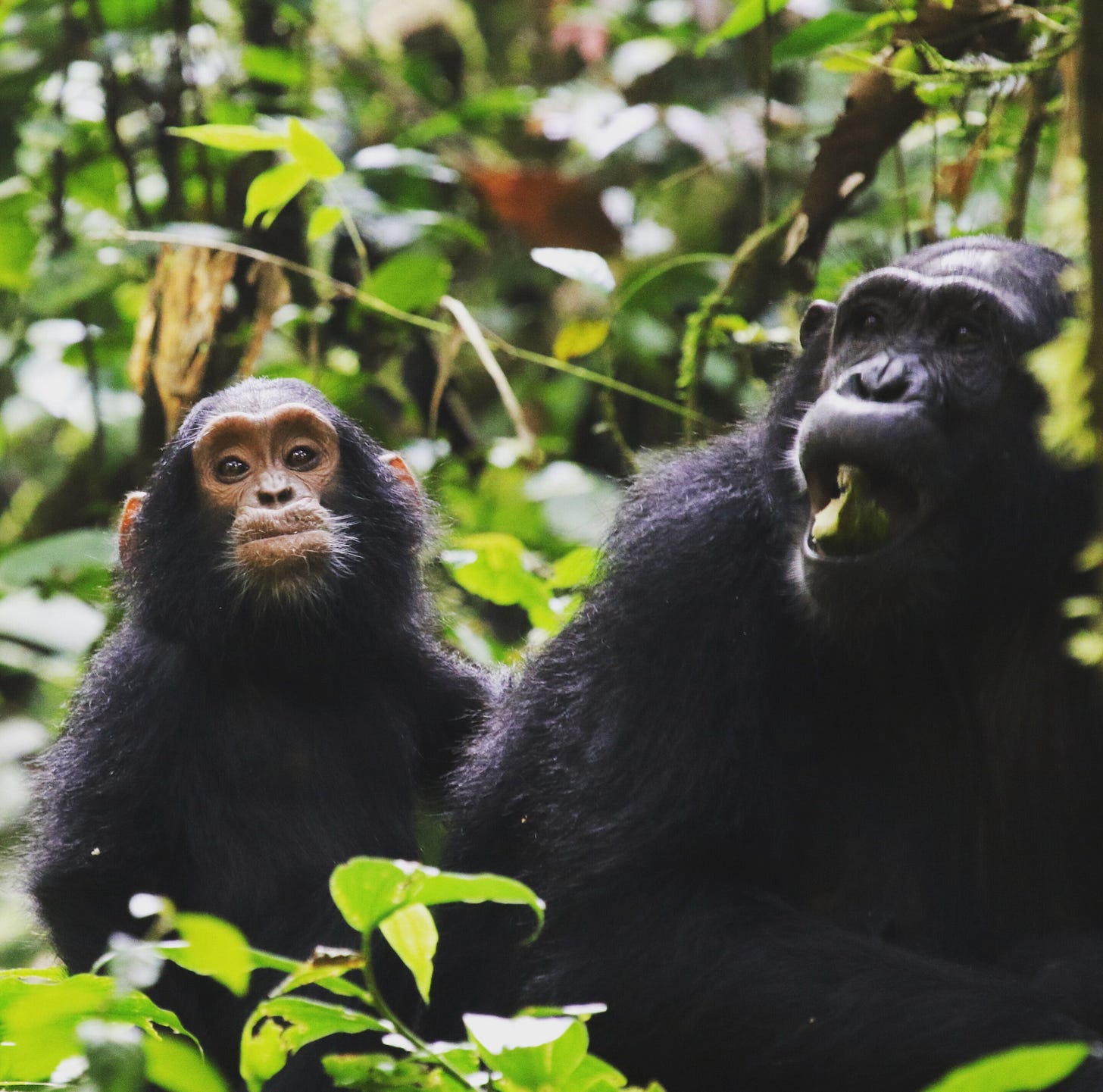
Among apes, cofeeding is common. Sharing high-value foods, especially fruits, can help form and strengthen social bonds. For humans, shared alcohol consumption plays a similar role. From beer halls to sacred rituals, drinking together builds identity and cohesion.
“Is it possible to trace the roots of these human foodways to social scrumping of fermented fruits in the rainforests of Africa?” the researchers ask.
It’s an intriguing idea. If our primate ancestors once gathered around fallen fruits, their behavior might have laid the groundwork for the complex rituals of sharing and celebration that define human societies today.
From Monkeys in Medieval Margins to Modern Science
Scrumping has cultural resonance beyond biology. During the Middle Ages, artists and theologians often portrayed fruit-eating monkeys as symbols of temptation—mimics of human vice. A 16th-century painting by Peter Paul Rubens, Earthly Paradise with the Fall of Man, features monkeys clutching fruit beside Eve and the serpent, linking apes with curiosity, indulgence, and the loss of innocence.
“The Gothic tradition recognized scrumping as an essential behavior of nonhuman primates,” the authors write, noting that this imagery may be more than coincidence. It reflects how deeply these behaviors resonate in the human psyche.
Why the Word Matters
The authors argue that naming a behavior is more than semantic. Like “meme” or “symbiosis,” the term scrumping may catalyze new lines of inquiry. It offers scientists a way to recognize and investigate an ancient practice that has shaped primate biology and human culture alike.
“We didn’t even have a word for this behavior,” the researchers note, and without one, it was easy to overlook. Now that scrumping has a name, it can enter scientific discourse—and perhaps transform it.
Related Studies
Here are some studies that further explore the evolutionary links between fruit, fermentation, and social behavior in primates:
Carrigan MA et al. (2015). Hominids adapted to metabolize ethanol long before human-directed fermentation.PNAS, 112(2), 458–463. https://doi.org/10.1073/pnas.1404167111
Dudley R & Maro A (2021). Human evolution and dietary ethanol. Nutrients, 13(7), 2419. https://doi.org/10.3390/nu13072419
Casorso JG et al. (2023). Seed dispersal syndrome predicts ethanol concentration of fruits in a tropical dry forest.Proc. R. Soc. B, 290: 20230804. https://doi.org/10.1098/rspb.2023.0804
Bowland AC et al. (2025a). The evolutionary ecology of ethanol. Trends in Ecology and Evolution, 40(1), 67–79.
Bowland AC et al. (2025b). Wild chimpanzees share fermented fruits. Current Biology, 35, R279–R280.
Nathaniel J Dominy, Luke D Fannin, Erin R Vogel, Martha M Robbins, Catherine Hobaiter, Fermented fruits: scrumping, sharing, and the origin of feasting, BioScience, 2025;, biaf102, https://doi.org/10.1093/biosci/biaf102


